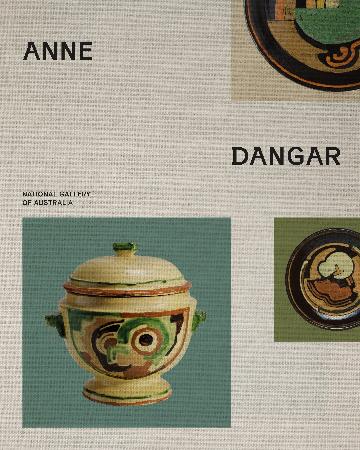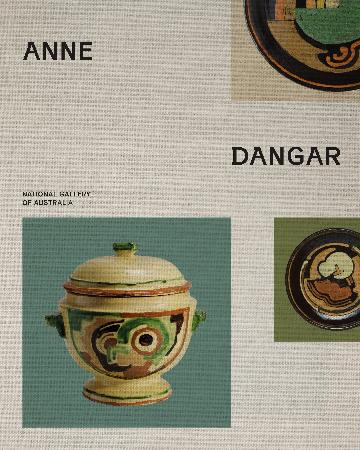National Gallery of Australia
Anne Dangar
Anne Dangar
Couldn't load pickup availability
Peta's Review
Anne Dangar (1885-1951) is probably a name many people wouldn’t recognise. But thankfully, with the National Gallery of Australia staging the largest-ever Australian retrospective of Dangar’s work, this will soon change. Opening in December last year in conjunction with the Ethel Carrick exhibition, the Dangar exhibition features more than 136 of her works, as well as sketches and letters detailing her life and legacy. The exhibition is another of the Know My Name projects, initiated by the NGA, designed to highlight and celebrate the work of women artists who have contributed to Australia’s cultural history.
So, who was Anne Dangar? NGA’s curator of Australian art, Rebecca Edwards, tells us that “Anne Dangar is among the very few Australian artists to work alongside the European avant-garde in the 20th century,” embracing cubism in her works. Dangar was an artist working in a variety of mediums, from paper to textiles to ceramics. Born in 1885 in the coastal town of Kempsey in NSW, she studied at the Julian Ashton Art School in Sydney. In 1926 she travelled to France with her friend and fellow artist, Grace Crowley, becoming captivated by the rising Cubist and Modernist art movements they witnessed. However, returning to Sydney three years later, she found strong resistance to the progressive European movements, and so in 1930, she travelled back to France and joined the artists’ commune founded by Albert Gleizes, artist, philosopher and self-proclaimed founder of Cubism. Dangar continued to correspond with Grace Crowley, describing the new modern artistic practices in Europe. Fortunately for future generations, Crowley kept all of Dangar’s letters to her, eventually donating them to the State Library of NSW. After various trips abroad, in particular to Morocco, Dangar eventually settled at Moly-Sabata, an artist commune in the south of France. She died in 1951 and was buried there.
While living mainly in Europe, Dangar never forgot her Australian roots. As with many artists living abroad, Dangar was still a dedicated advocate and promoter of modern art in Australia. Arguably the first artist to exhibit Cubist art in Australia, she can be credited with profoundly influencing the development in this country of abstraction, along with contemporaries such as Crowley and Dorrit Black, Grace Cossington Smith and Margaret Preston.
The publication which accompanies the Exhibition is a beautiful record of this important exhibition. It is comprised not only of stunning images of Dangar’s works, letters and family photos but also offers a comprehensive overview by curator Rebecca Edwards of Dangar’s life, works and legacy, as well as five focus essays by Dangar scholars. As I said in my earlier review of the Ethel Carrick publication, if you cannot travel to Canberra to view the Exhibition, then this stunning book is an absolute must for your coffee table.
Publisher's Review
The Australian cubist and potter Anne Dangar (18851951) has occupied a unique position in art history as one of the country's most important yet underacknowledged modern artists. The National Gallery is honoured to present Anne Dangar, a publication accompanying a major retrospective exhibition celebrating Dangar's life and art through previously unknown works, new scholarship and perspectives on her practice.
Rebecca Edwards, Curator, Australian Art, provides a detailed and engaging account of Dangar's art and life, tracing her beginnings in Kempsey, NSW, her studies in Sydney and Paris, and her subsequent journey to Moly-Sabata, Sablons, France. There she established her international reputation as a cubist artist. Featuring contributions by Elena Taylor, Angela Goddard, Anne O'Hehir, ADS Donaldson and the late Peter Brooke, the publication surveys Dangar's art, networks and legacy.
With over 150 of the artist's works reproduced, as well as previously unpublished archival material, this richly illustrated book is a comprehensive record of Dangar's impressive artistic output and impact on Australian modernism.
Share


